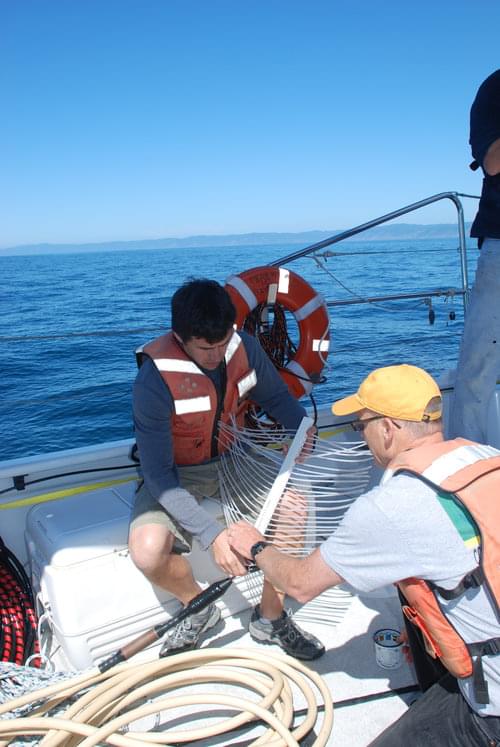

Jackson Currie and Sam Johnson from USGS prepare the “mini-sparker” for deployment. The “mini-sparker” sends out a “shot” every half or one second depending on water depth, and the sound of the shot bouncing back helps determine the hardness of the subsurface layers of the ocean bottom. Data from the “mini-sparker” creates an image of the cross section of the fault, revealing the structure of the fault and sediments surrounding it.